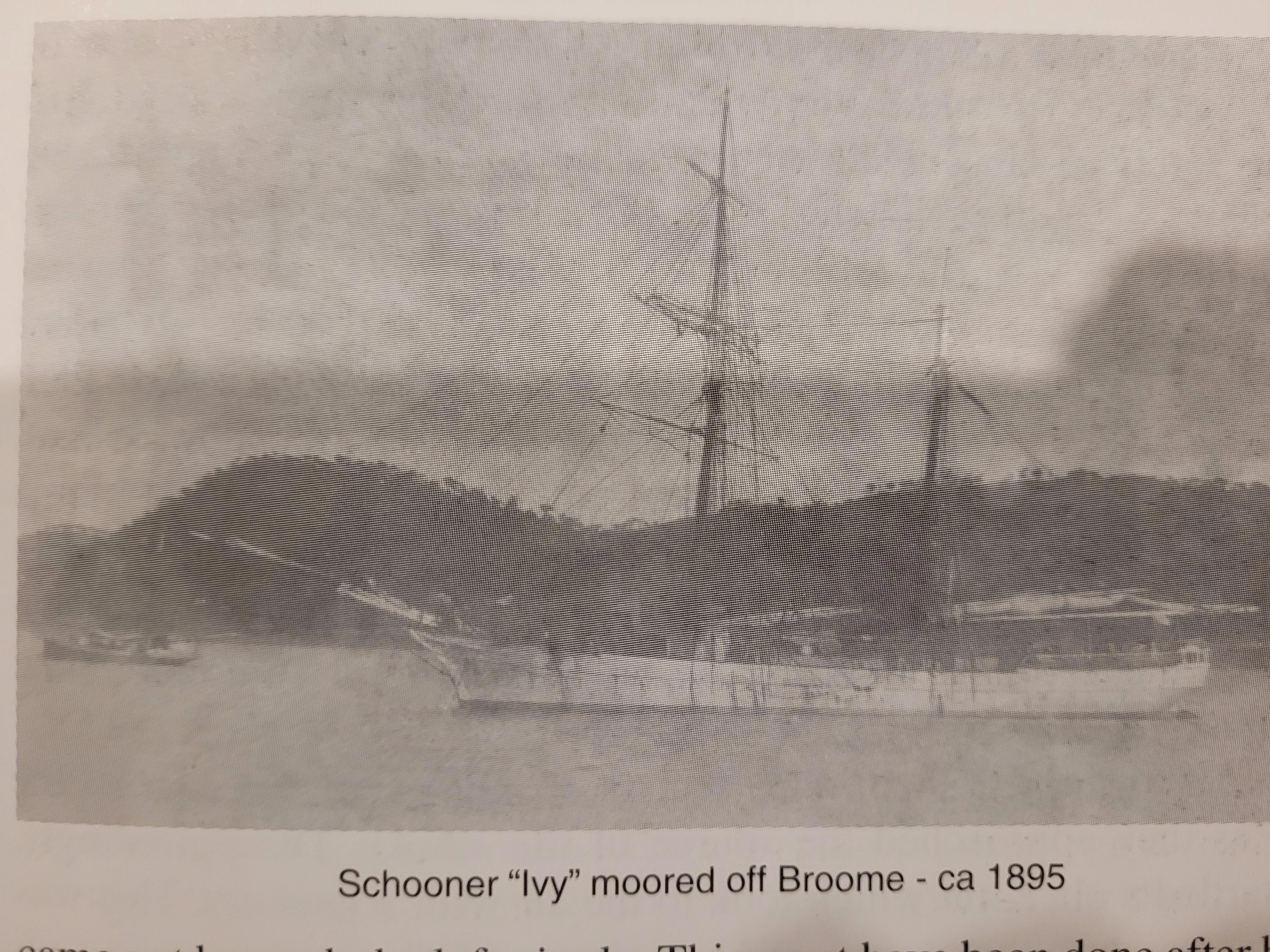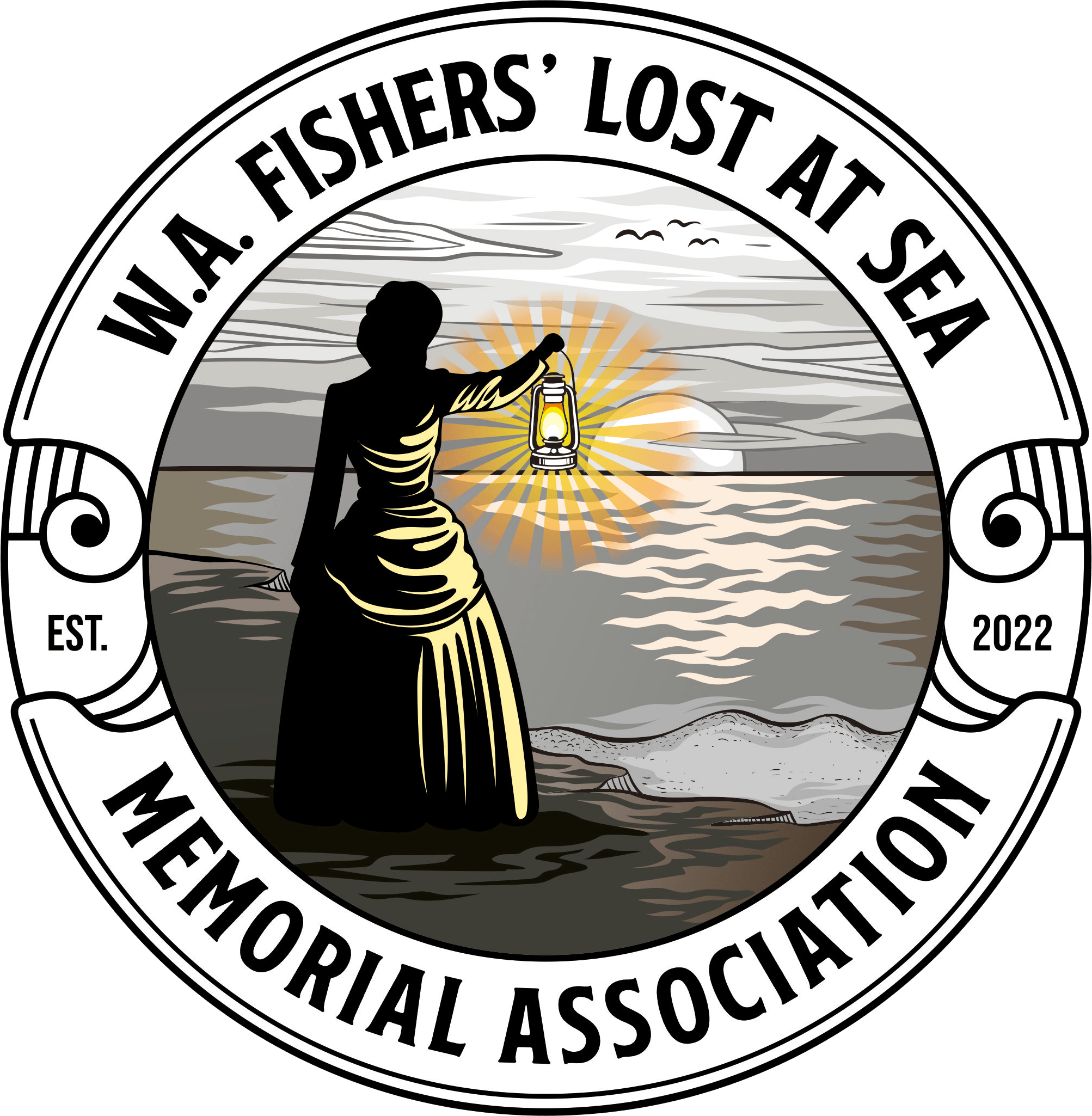Martin Liljeroth and Henry
Vessel Name: Ivy
Martin Liljeroth; body recovered
Henry; body not recovered
22 December 1891

Marten Liljeroth was the mate on the pearling schooner Ivy. In December 1891 he was pleased with the amount of shell the luggers were taking in the far north pearl beds. The season was almost over, and the crews were ready for the coming layup.
There were discussions between the masters and captains about where they should lay up that year. Pearlers had been avoiding the layup creeks in King Sound since the killing in 1885 of Captain James Rickinson and the mate Challoner Shenton of the Pearl. The pearlers did not feel there had been justice and they harboured some resentment about it. [Read the Rickinson and Shenton story].
Some of the master pearlers moved their luggers further north, although the coast between Wyndham and Derby had not been explored yet. Captain Biddles moved Ivy to Prince Frederick Harbour with her luggers. He had more of his schooners and luggers there, and some of the other master pearlers had sent their outfits to the fresh shell grounds for the rich takings.
Marten Liljeroth was born in Sweden. His father Anders and mother Bengta Andersdotter had three children: Marten, Hanna and Johan. Marten had travelled around the world seeking adventure and fortune in the West Australian pearl fields.
While the luggers were taking shells in a bay near the Anderton Islands, Marten and seven of the schooner’s crew took Ivy’s whaleboat and dinghy to the harbour. They had been setting their fishing net each morning and taking the fish to vary their diet. They spread their net across the mouth of a tidal creek, and it filled with fish as the tide ran out. They were armed in case of trouble but had not experienced any.
On 22 December 1891 Marten also took Henry. He was a young Aboriginal boy from Roebuck Bay who was a part of their crew. The firearms had been forgotten, but none of the men expected to need a rifle or revolver, so they left without collecting them.
Marten dropped the men off to pull in and reset the net, and he and Henry took the dinghy about 200 yards away to look at another small beach. They returned to collect the netted fish. About 20 minutes later the shore was alive with a group of Warrora men angrily waving nullas and spears.
The pearl crew ran towards the whaleboat as Marten pulled towards them. The natives chased them throwing nullas across the three-yard distance between them. The carpenter was struck on his shoulder, and one of the Beagle Bay men was hit on his head.
Marten and Henry met the escaping pearlers. They armed themselves with oars, rowlocks and tomahawks to fight off the oncoming Worrora group. The dinghy grounded on sand and Marten and Henry jumped into the water to push it free.
Henry was hit on his head with a nulla, and he fell instantly. The attackers hit him repeatedly and killed him.
At that point about 20 Aboriginals rushed from the bush onto the beach. They had spears which they threw at the small boats. A spear grazed Marten’s leg. The thrower ran towards him to strike him, and Marten knocked him down with an oar. He hit a second man. Then more attackers reached him, and he was struck on his head many times. He died from the head injuries he received.
Some of the men dragged Marten’s body out of the dinghy. They manned the dinghy and started towards the whaleboat. Ivy’s crew were rowing as fast as they could. Even so, the dinghy almost caught them before they found the safety of deep water.
Captain Mackellar was aboard the fleet’s mother boat, Ivy. The whaleboat headed directly to it to report the killings and get help to rescue Marten and Henry. Boats were immediately launched ready to search for the fallen crew members.
Marten’s body was found with head wounds and a spear wound that began at the left shoulder and exited in the left breast. The search for Henry’s body was unsuccessful and one of the Beagle Bay Aboriginals said the Worrora group would eat him.
The dinghy tracks led to the beach, and Captain Mackellar led his men to follow them. On the beach the tracks of the Worrora men led into the bush. They had taken the dinghy with them. The Ivy men pulled the whaleboat up onto the sand and followed the tracks that disappeared into a narrow track.
After an hour the crew found the dinghy hidden in the bush. They carried it back to the beach, tied it behind the whaleboat and owed it. It was 5pm when Captain Mackellar and his men were six miles from the mother boat with a narrow pass to navigate. It looked ideal for an ambush. He made the choice to stop chasing the natives and return to the fleet.
There were about 60 Aboriginals gathered on top of a cliff top watching them. They shouted and shook their spears menacingly. Captain Mackellar fired some warning shots over their heads. The crew arrived back at the Ivy at 6pm.
They buried Martin’s body above the beach the next morning. Captain Biddles reported the killings to the authorities and awaited police action and punishment to the ones who killed his men.
Ivy ended her season and returned to pearling again for the next few years. She was a 59 ton two-masted schooner built by Robert Howson in 1881 for John Bateman. Her official number was 75310 and she was registered in Fremantle as 1 of 1882.She was 20 metres long, 5.2 metres across her beam and had a draught of 2.2 metres.
On 27 November 1896 Ivy was wrecked when she struck reef at the Lacepedes Islands. Her owner/master then was Master Birnie. He and the crew were in the water for hours before they were rescued by some turtle catchers who were based on the islands. All the crew survived but they lost all their possessions.
